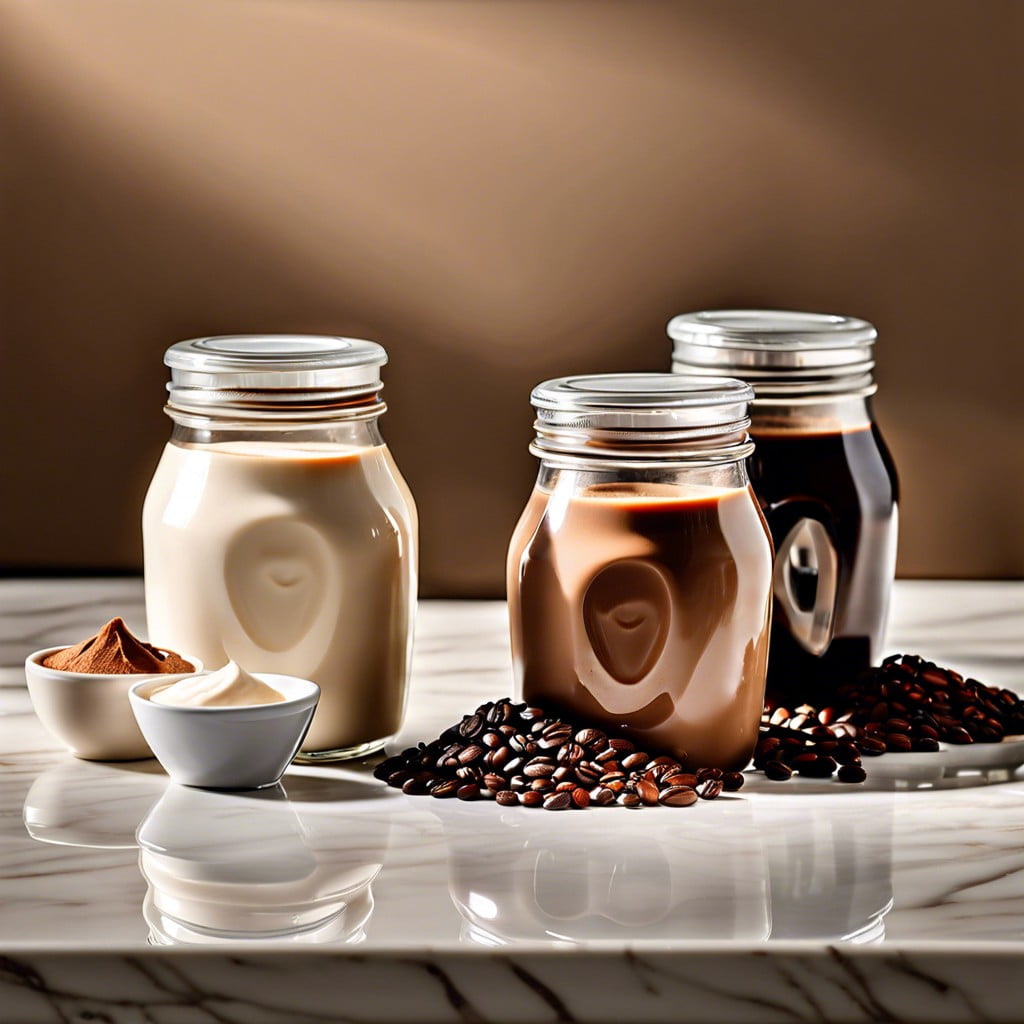Learn about the shelf life of coffee creamer and how to tell when it’s time to toss it out.
Types of Coffee Creamers

Coffee creamers come in a variety of forms, each offering a different shelf life and flavor profile. Dairy-based creamers, made from milk or cream, provide a rich, creamy texture but are perishable and need refrigeration. Non-dairy creamers, which include options like almond, soy, and coconut milk, cater to those with lactose intolerance or vegan preferences. These often last longer than their dairy counterparts. Powdered creamers, ideal for non-refrigerated storage, offer convenience and a long shelf life but may contain additives to maintain stability. Each type alters the taste and longevity of the creamer, allowing you to customize your coffee experience.
Shelf Life of Coffee Creamers
Different varieties of coffee creamers have varying expiration dates. Unopened dairy creamers last about a month past the printed date, while non-dairy options can stay fresh for up to two months. Once opened, aim to use any type of creamer within two weeks for optimal freshness and taste.
Individual creamer packets boast a longer shelf life. These can be good for up to six months past their expiration dates since they’re usually ultra-pasteurized.
For those who prefer plant-based alternatives, their shelf life can extend slightly longer than dairy counterparts when unopened. However, similar rules apply once the seal is broken: use it or lose it within two weeks.
Signs That Coffee Creamer Has Gone Bad
A sour smell is the first red flag. Fresh creamer has a neutral or sweet aroma, so any hint of sourness suggests spoilage. Next, check for changes in texture. If your liquid creamer has become lumpy or the powder creamer clumps together stubbornly, it’s time to let it go.
Taking a peek at the color can also give clues. Any discoloration, especially a yellowish tinge in normally white creamer, is a warning sign.
Finally, if the creamer has passed the smell, texture, and color test, a tiny taste can confirm its status. Any off flavor—particularly bitterness—is the final indicator that your coffee creamer should be discarded. Remember, it’s always safer to err on the side of caution with dairy and non-dairy products.
Proper Storage Techniques for Coffee Creamers
To extend the freshness of your coffee creamer, consider these practical tips for storage:
Keep it cool: Store creamer in the refrigerator at a consistent temperature, ideally between 34°F and 38°F. This stabilizes its environment and slows bacterial growth.
Seal the deal: After each use, ensure the cap or lid is tightly secured to minimize exposure to air. This helps to preserve the quality and flavor.
Respect the expiration date: Even unopened, avoid using creamers past their expiration date. Once opened, follow the guidance on the packaging, typically suggesting consumption within a week or two.
Avoid cross-contamination: Use a clean spoon or pour directly to avoid introducing contaminants into the container. This simple habit can significantly prevent premature spoilage.
By following these steps, you can maximize the shelf life and enjoyment of your coffee creamer.
Impact of Consuming Expired Coffee Creamer
Sipping coffee with expired creamer can be more than just a bad taste experience; it may affect your health. Expired creamers, especially dairy-based, can develop harmful bacteria that lead to food poisoning. Symptoms might include nausea, vomiting, or diarrhea, typically appearing a few hours after consumption.
Non-dairy creamers, laden with preservatives, are less likely to harbor bacteria but can still degrade into unhealthy compounds. Always check for any off-smells, changes in texture, or discoloration before use, regardless of the expiry date. Your morning cup should be safe and satisfying, not a gamble.